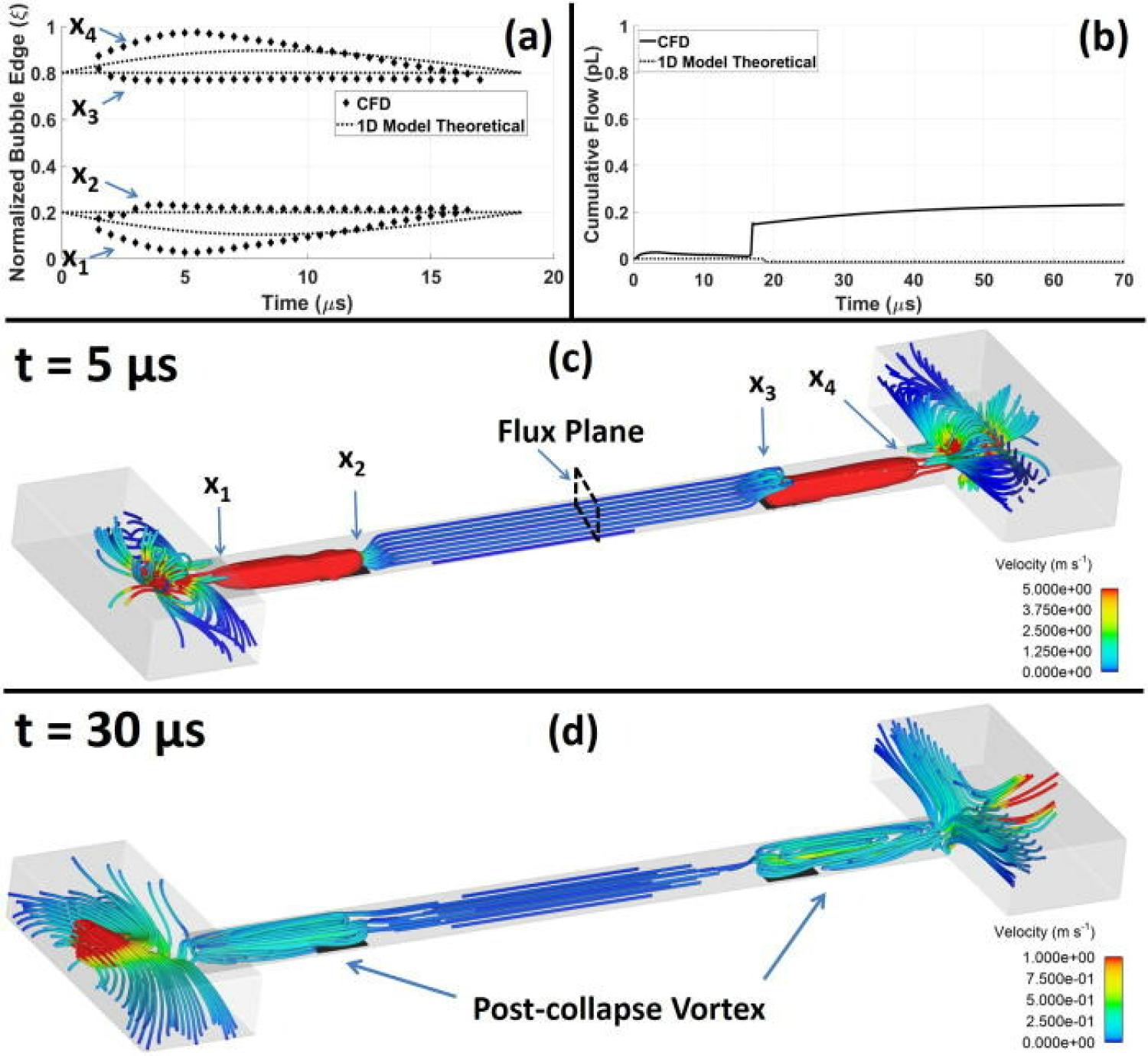Paper in Physics of Fluids

In collaboration with the MacCurdy Lab, we recently published a paper in Physics of Fluids titled Modeling of Contactless Bubble-bubble Interactions in Microchannels with Integrated Inertial Pumps.
Abstract: In this study, the nonlinear effect of contactless bubble–bubble interactions in inertial micropumps is characterized via reduced parameter one-dimensional and three-dimensional computational fluid dynamics (3D CFD) modeling. A one-dimensional pump model is developed to account for contactless bubble-bubble interactions, and the accuracy of the developed one-dimensional model is assessed via the commercial volume of fluid CFD software, FLOW-3D. The FLOW-3D CFD model is validated against experimental bubble dynamics images as well as experimental pump data. Precollapse and postcollapse bubble and flow dynamics for two resistors in a channel have been successfully explained by the modified one-dimensional model. The net pumping effect design space is characterized as a function of resistor placement and firing time delay. The one-dimensional model accurately predicts cumulative flow for simultaneous resistor firing with inner-channel resistor placements (0.2L < x < 0.8L where L is the channel length) as well as delayed resistor firing with inner-channel resistor placements when the time delay is greater than the time required for the vapor bubble to fill the channel cross section. In general, one-dimensional model accuracy suffers at near-reservoir resistor placements and short time delays which we propose is a result of 3D bubble-reservoir interactions and transverse bubble growth interactions, respectively, that are not captured by the one-dimensional model. We find that the one-dimensional model accuracy improves for smaller channel heights. We envision the developed one-dimensional model as a first-order rapid design tool for inertial pump-based microfluidic systems operating in the contactless bubble–bubble interaction nonlinear regime.

